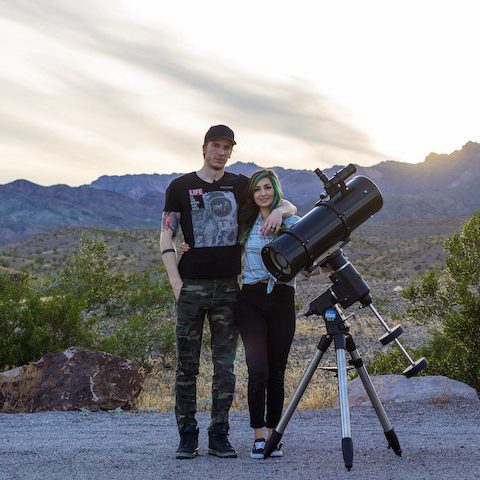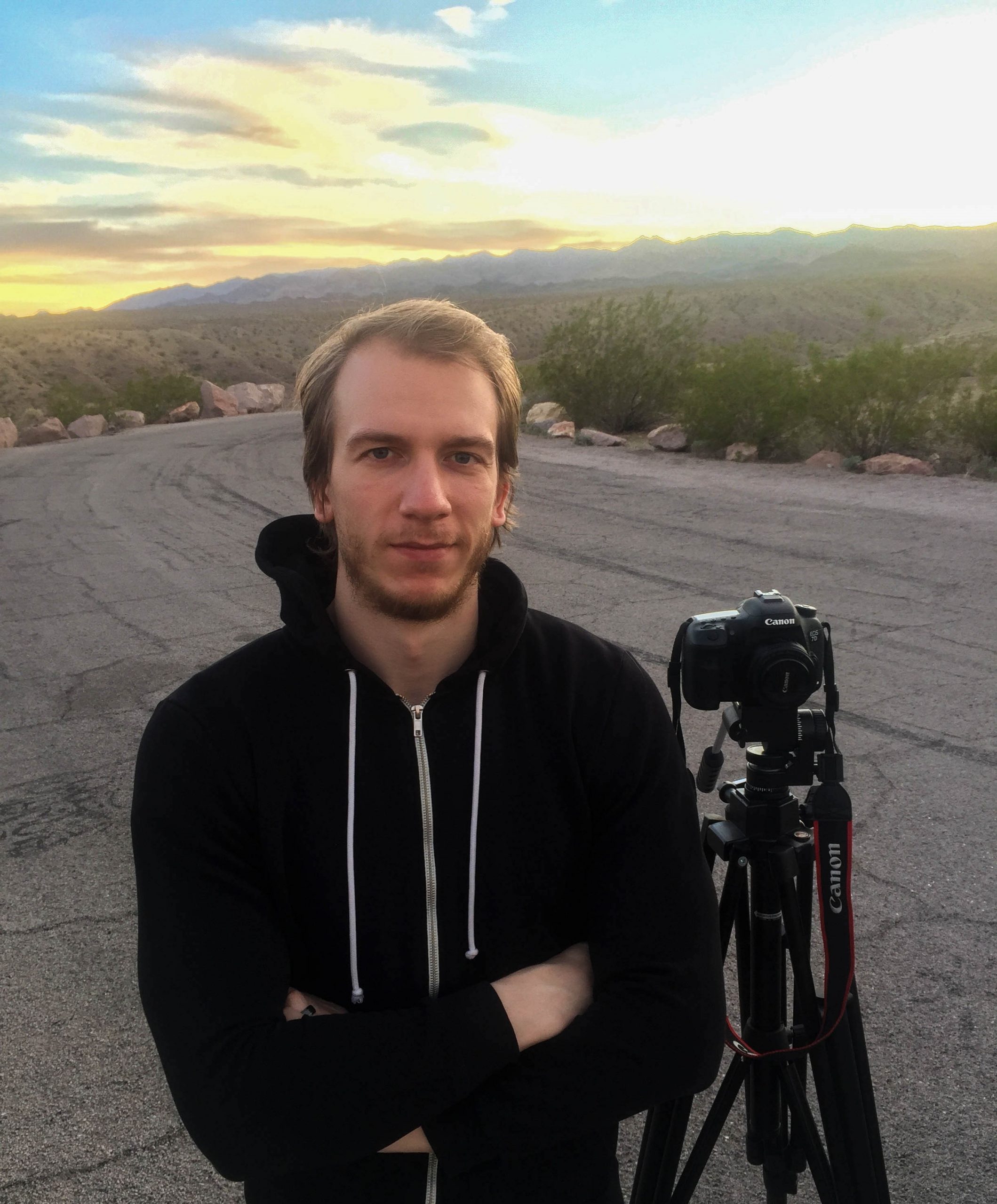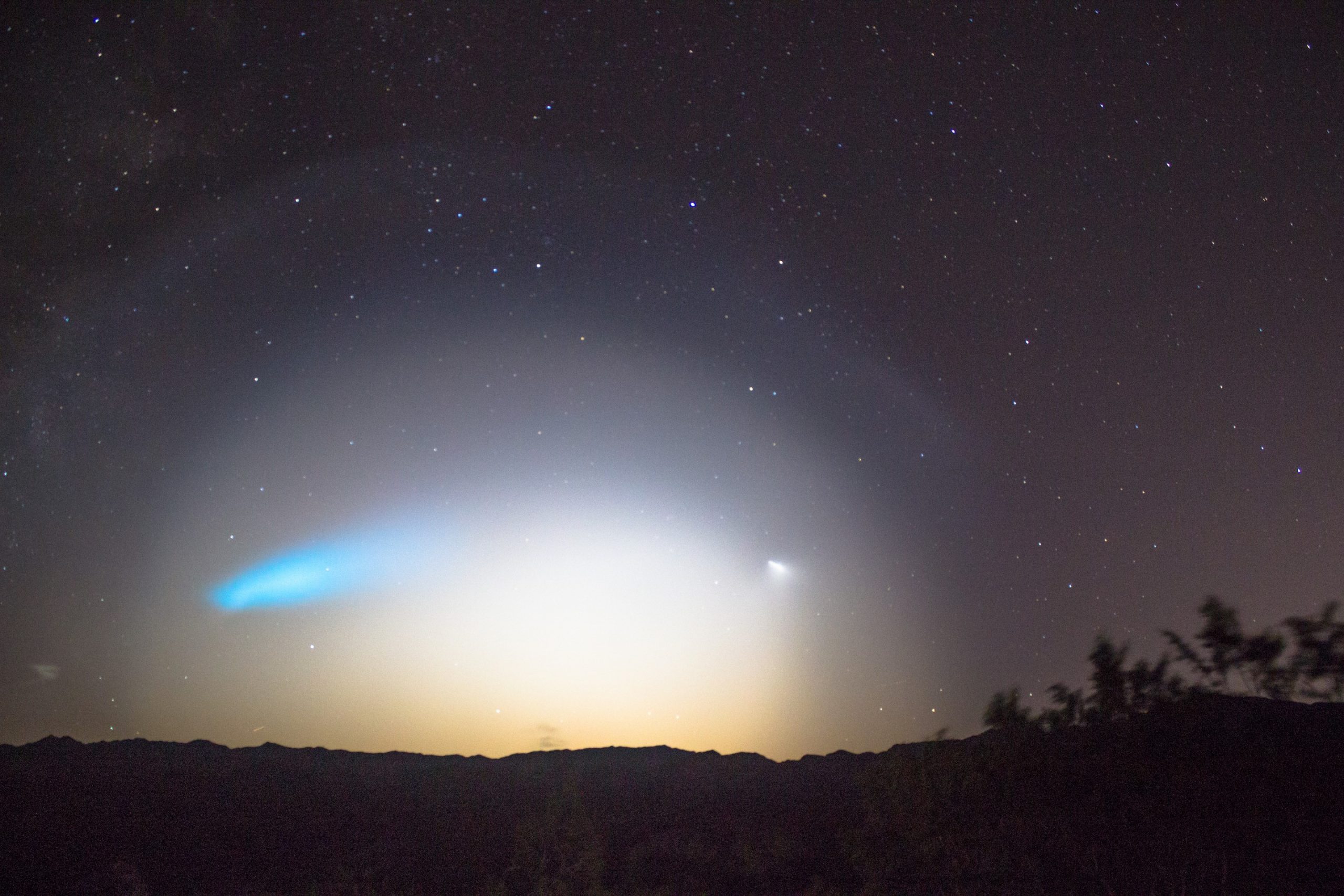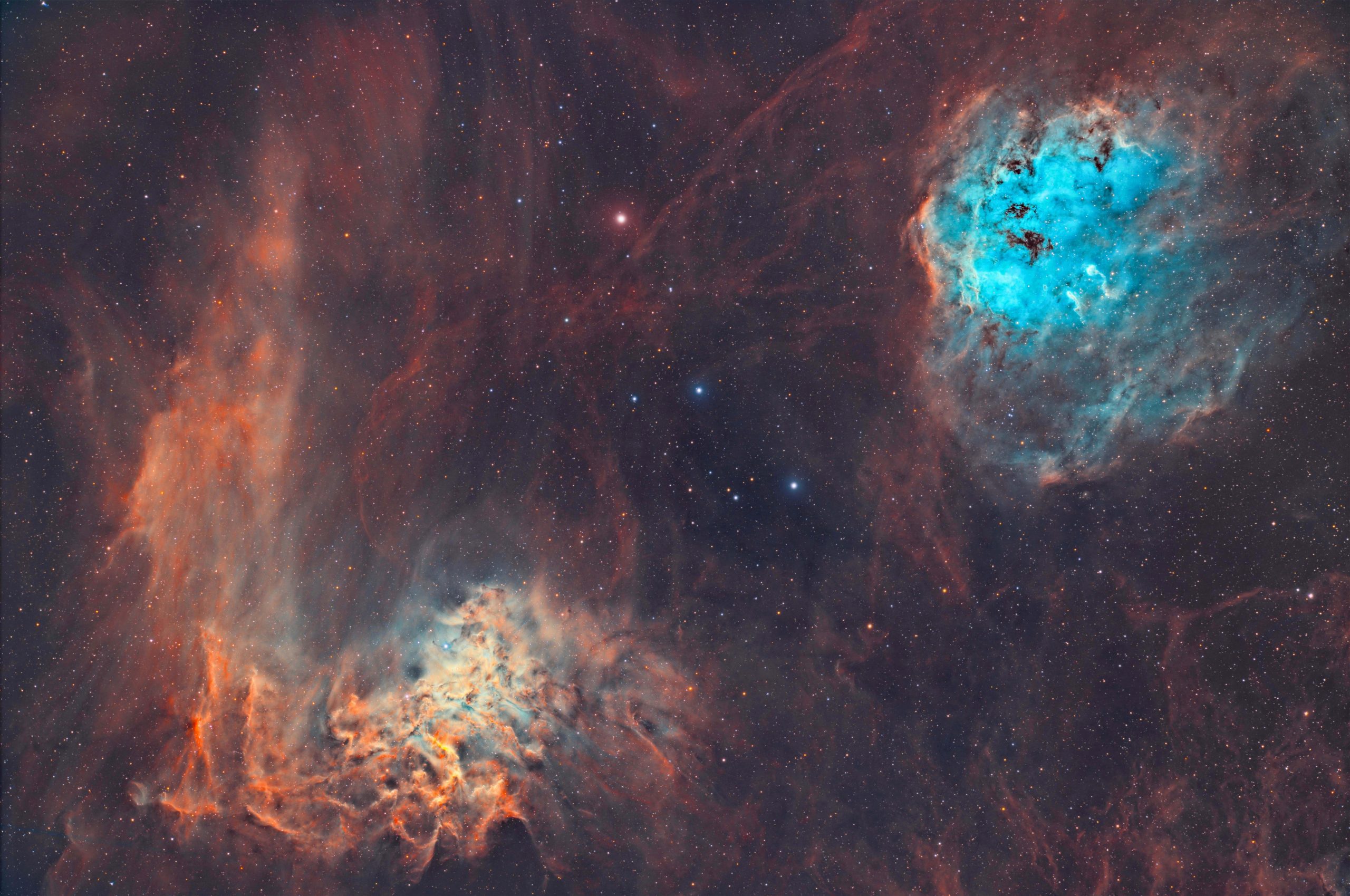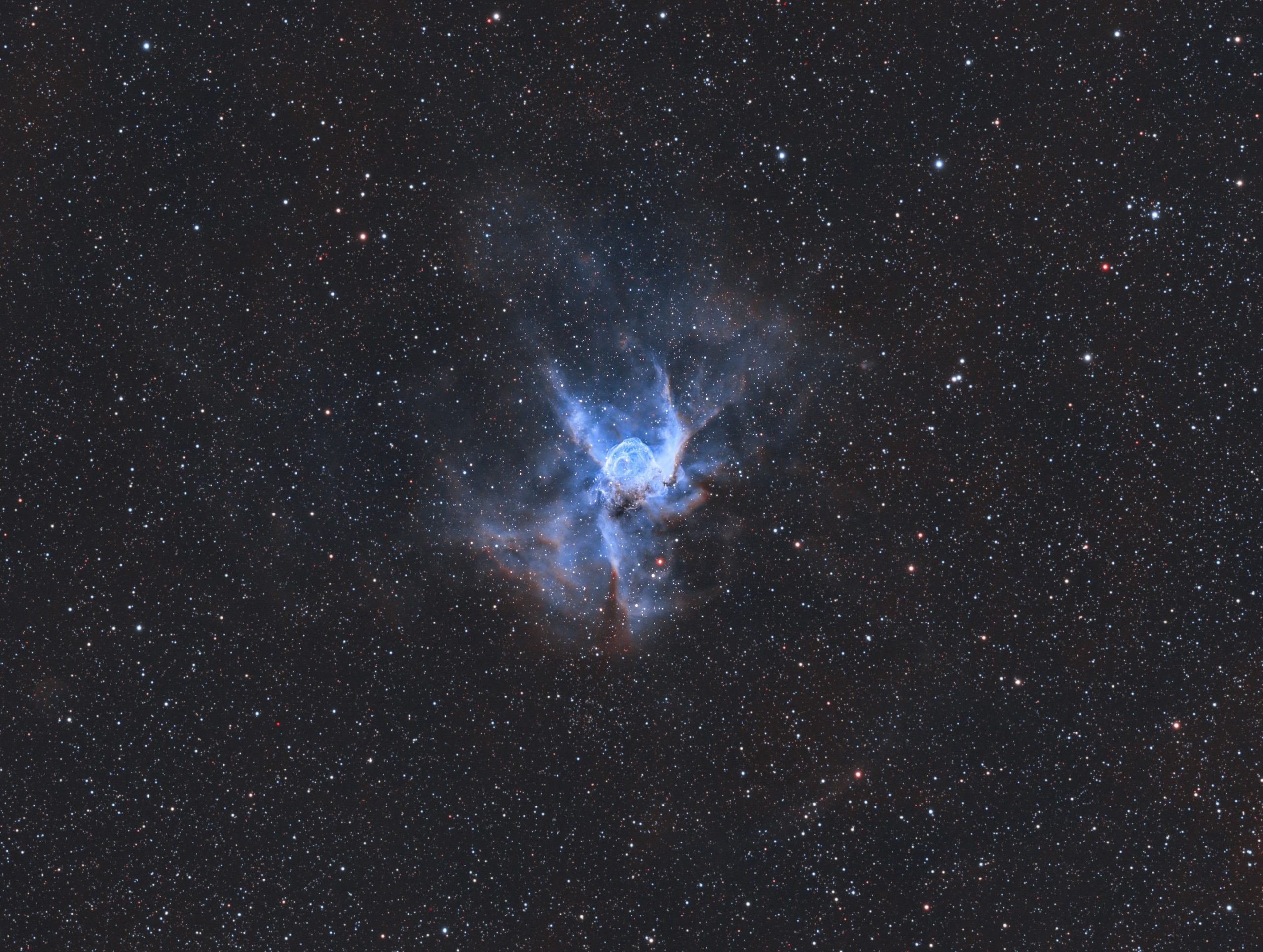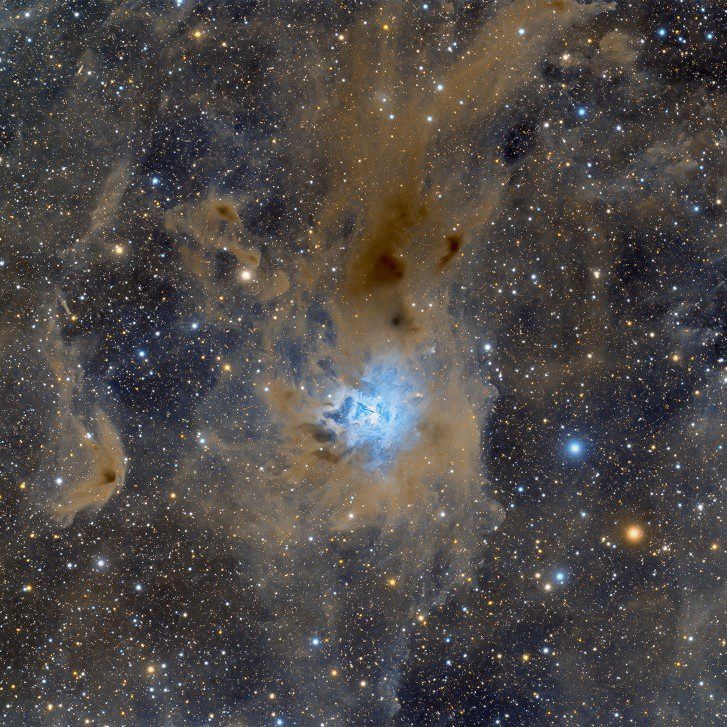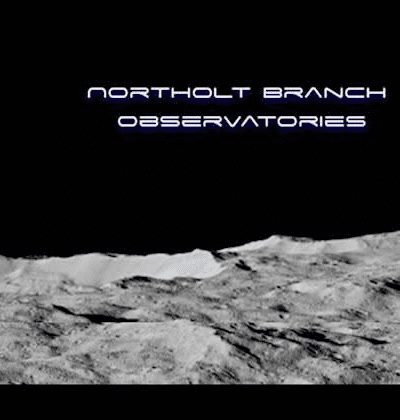QHYCCD: Hello! Feel very honored and pleased to have this chance to get to know more about you. Please make self-introduction. It will be better if you can show a photo of yourself.
Antoine Grelin: Hi! My name is Antoine Grelin, and I created Galactic Hunter with my wife Dalia. We do our best to make useful astrophotography content for both beginner and advanced astrophotographers, through videos and blog posts on our website. I live in Las Vegas, NV, and image from both my Bortle 9 backyard and the desert.
QHYCCD: And Could you tell us when did you start to like astrophotography? Why?
Antoine Grelin: I started astrophotography in 2015. I had moved to Las Vegas a few years ago from Seattle and suddenly realized that Las Vegas was surrounded by a desert! The desert is a great place to do astrophotography because it does not have much light pollution. The first thing that made me research astrophotography is when I was looking at pictures of the Pleiades online. I opened a few pictures and saw that they were taken by amateurs, and not NASA. I was blown away and immediately wanted to dig more into it and see if I could also take similar images.
QHYCCD: I always see you make some review videos with a beautiful lady, is she your girlfriend?
Antoine Grelin: Dalia is my wife, she is a member of the STELA group of female astrophotographers. We often do astrophotography together and she is a big part of Galactic Hunter. We record most videos together unless she is too busy with work. We love going out to image together and enjoy being under the stars.
QHYCCD: What is your first set of equipment? Which camera, telescope, and mount?
Antoine Grelin: The first deep sky astrophotography setup I bought was an Orion 8” Astrograph f/3.9 telescope and an Orion Atlas EQ-G mount. I used an old Canon T3i as the camera. Before that, I was just using that same camera on a tripod.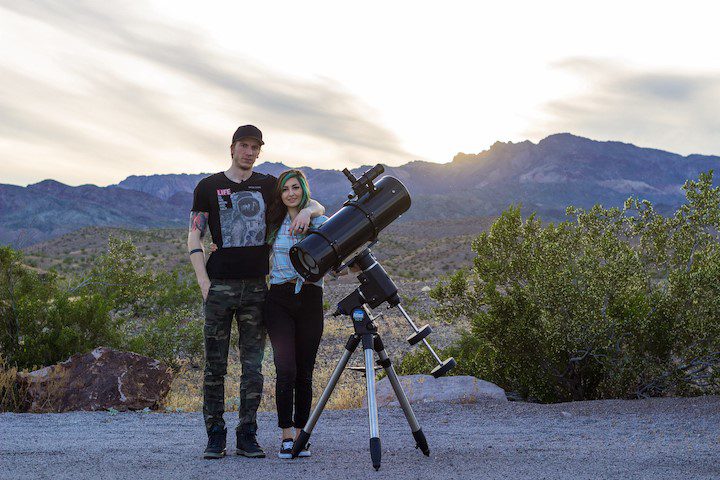
QHYCCD: Share with us something about your first astrophotography experience?
Antoine Grelin: One night, Dalia and I were out imaging in the desert with two friends. There was no cell service there, it was pitch black, and there was no one around for miles and miles as we were in the middle of nowhere. Suddenly, we all see a very bright object in the distance going up in the sky. After being very high, it exploded into a huge cloud of blue colored smoke. It was extremely strange and we were all very confused, especially because we did not have any cell reception there and were unable to look anything up on the internet! As soon as we were home, we saw on the news and Twitter that it was a missile test launch from the US NAVY, and several states were able to spot it because of how high it flew!
QHYCCD: Which QHY cameras have you used? And what feelings about them/it?
Antoine Grelin: I have used the QHY128C which was my first full frame camera. I loved it and really enjoyed full frame cameras more after this one. I also used the QHY5III462C which is my main planetary camera. I rarely do lunar and planetary imaging but have enjoyed using the QHY462 and am eager to get more images of planets with it! My current camera is the QHY600. I own the color version, which is absolutely fantastic, and have also been lucky enough to try the monochrome version for the past year which always blows my mind. I am a huge fan of the QHY600C/M camera. Lastly, I also use the QHY Polemaster every single time before imaging to quickly polar align.
QHYCCD: Which QHY product do you want for next time?
Antoine Grelin: Honestly, my dream camera is the QHY600 and it is the one I already use. I would love to actually own the monochrome version at some point because it is such a beast and so useful when you live in an extremely light polluted city like Las Vegas!
QHYCCD: Show us some images captured with your QHY cameras! Which one do you like best and why?
Antoine Grelin: Below are a few images taken with the QHY600.
IC 405 and IC 410 – The Flaming Star Nebula and Tadpoles Nebula. Taken from the city with QHY600M.
More information: https://www.galactic-hunter.com/post/the-flaming-star-nebula
M45 – The Pleiades. Taken from Bortle 4 with QHY600C.
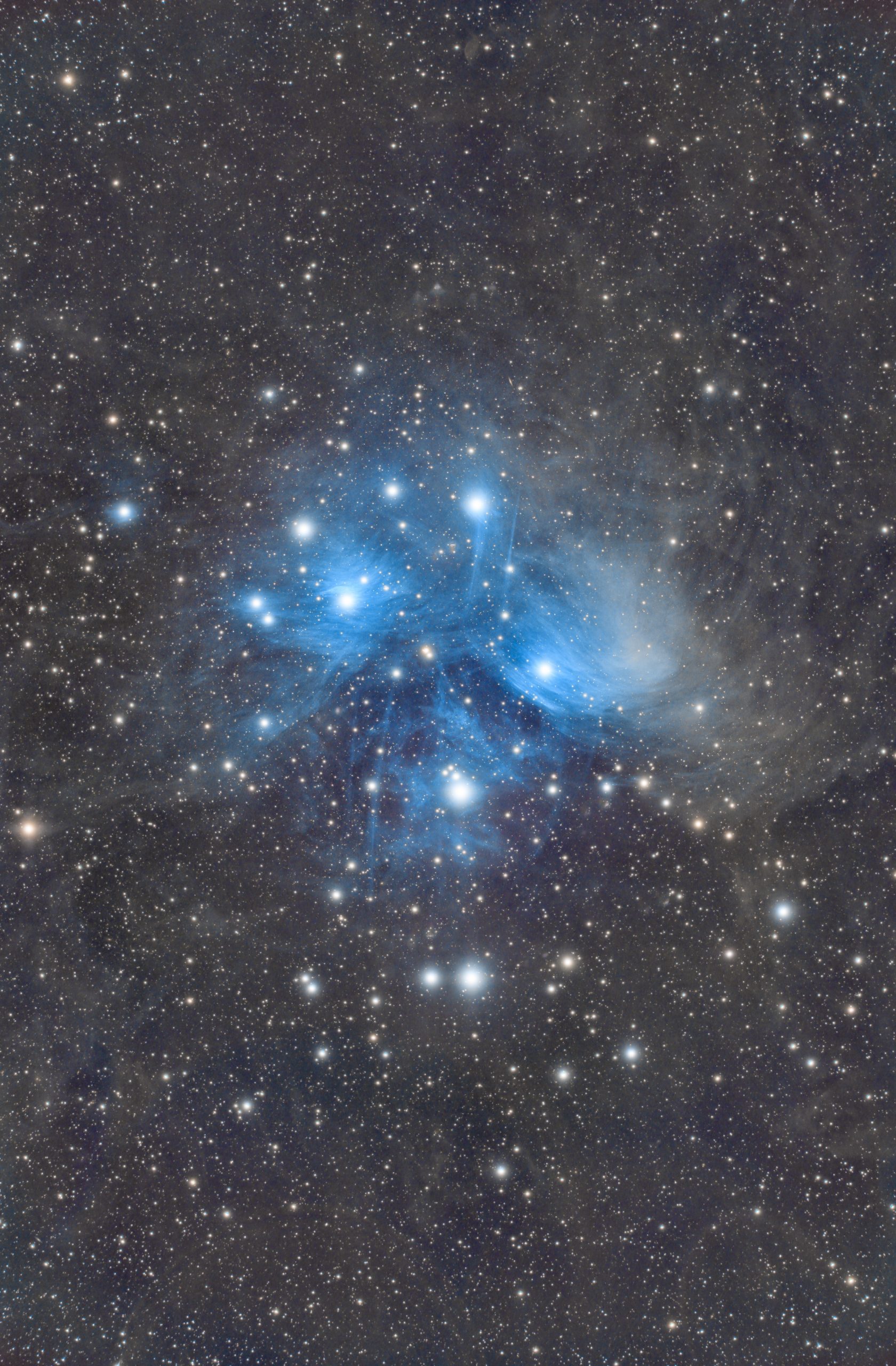 More information: https://www.galactic-hunter.com/blog/m45-the-pleiades-star-cluster
More information: https://www.galactic-hunter.com/blog/m45-the-pleiades-star-cluster
Thor’s Helmet. Taken with the QHY600M.
More information: https://www.galactic-hunter.com/post/thorshelmet-ngc2359
The Bubble Nebula and Lobster Claw Nebula. Taken with the QHY600M from the city.
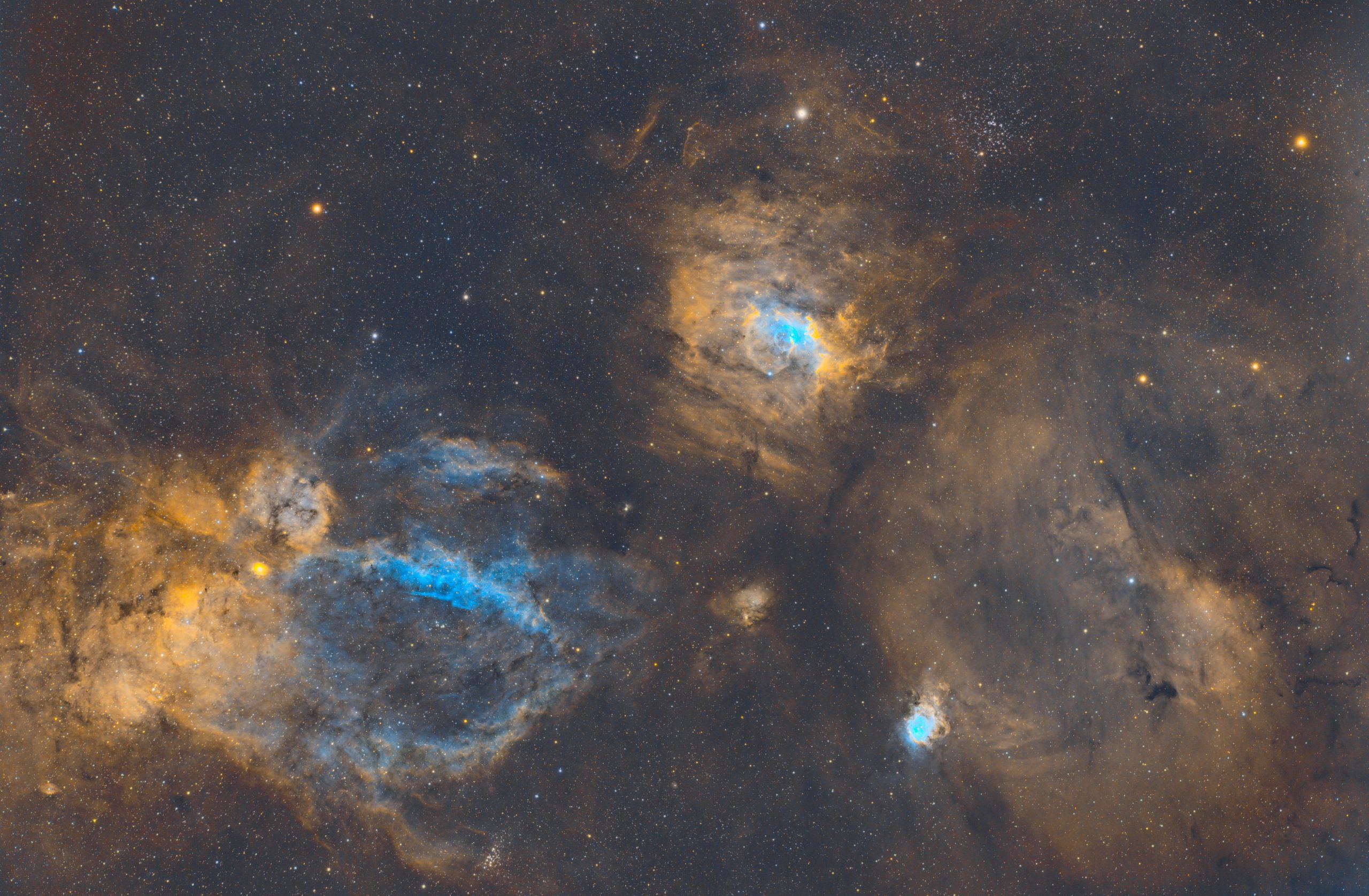 More information: https://www.galactic-hunter.com/post/ngc-7635
More information: https://www.galactic-hunter.com/post/ngc-7635
The Orion Region in OHS. Taken with the QHY600M from the city. My favorite because I decided to take a risk and process it with a rarely-used color combination, and I think it turned out really good!
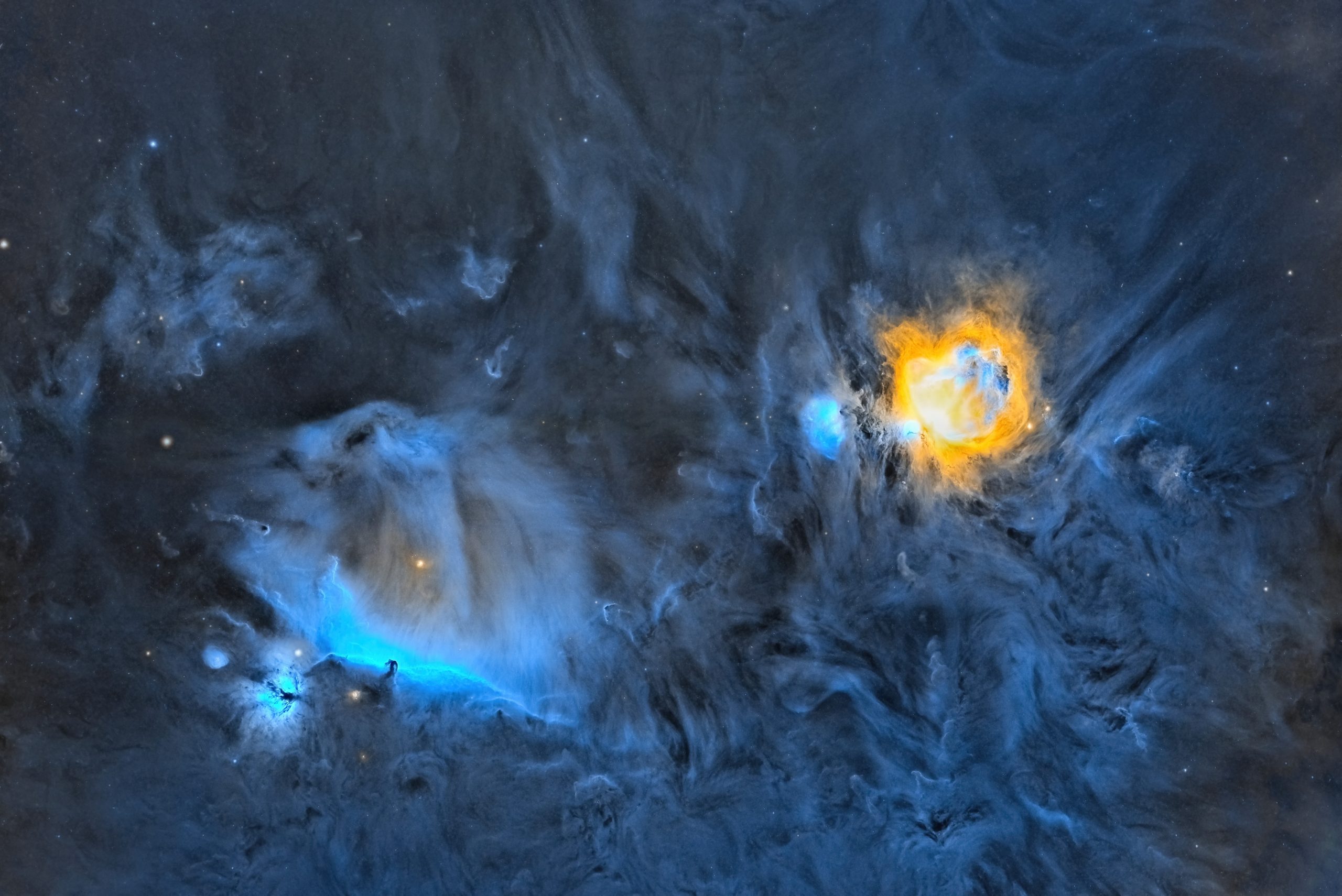 More information:https://www.galactic-hunter.com/post/ic-434-the-horsehead-flame-nebulae
More information:https://www.galactic-hunter.com/post/ic-434-the-horsehead-flame-nebulae
QHYCCD: What do you think astrophotography means for your life?
Antoine Grelin: Astrophotography means so much in my life. I quit my day job a couple years ago to be able to fully dedicate myself to it and hope to be able to keep doing this forever!
QHYCCD: Could you give some tips for the beginner of astrophotography?
Antoine Grelin: 1) Start slow with whatever gear you already have. You’ll learn much faster if you take it step by step than if you dive into advanced equipment right from the beginning.
2)Take your time. Don’t be afraid to spent several nights on the same target! The more data, the better. Deep sky objects aren’t going anywhere, at least not in our lifetime, so you’l get a chance to image hundreds of them over the years. Don’t rush through it and capture them all too quick or the quality won’t be there.
3)Don’t get discouraged if you live in a very light polluted city. Once you are ready, purchase narrowband filters and you will be able to get incredible images right from your Bortle 9 backyard.


